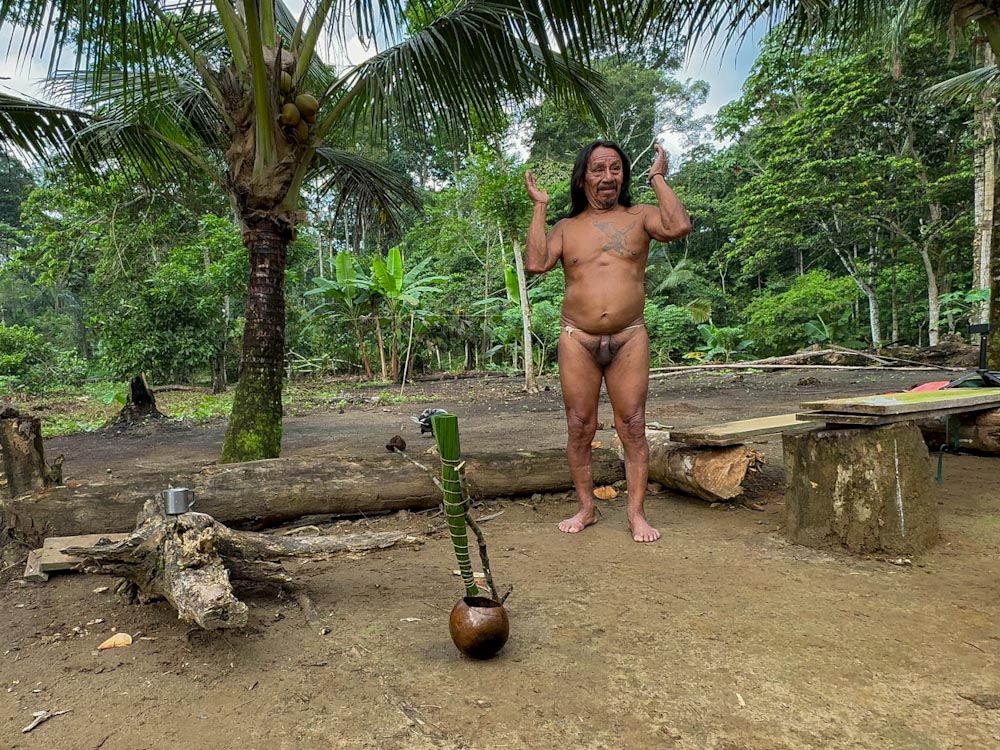The Waorani Indians in Ecuador hunt monkeys using arrows poisoned with curare vine. I visited this Amazonian tribe and took part in preparing dangerous poison. I invite you to join me on this adventure!
Содержание
What is curare?
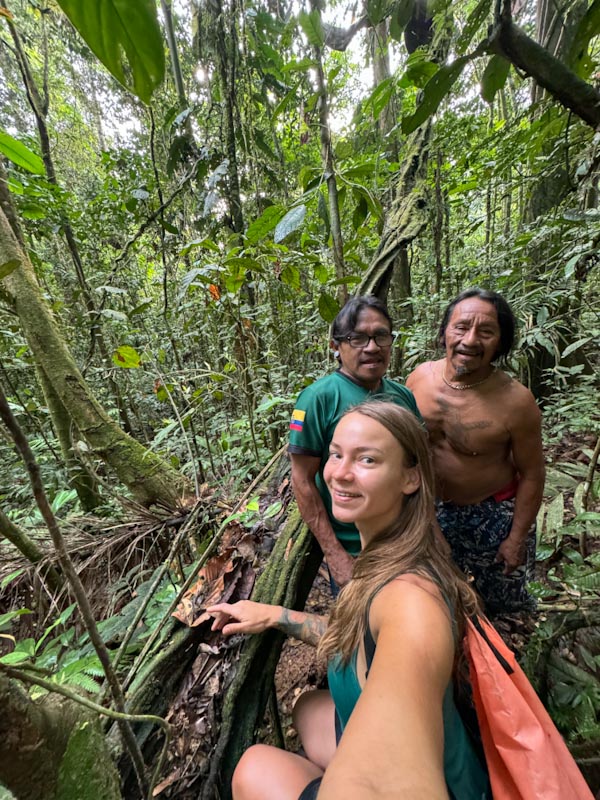
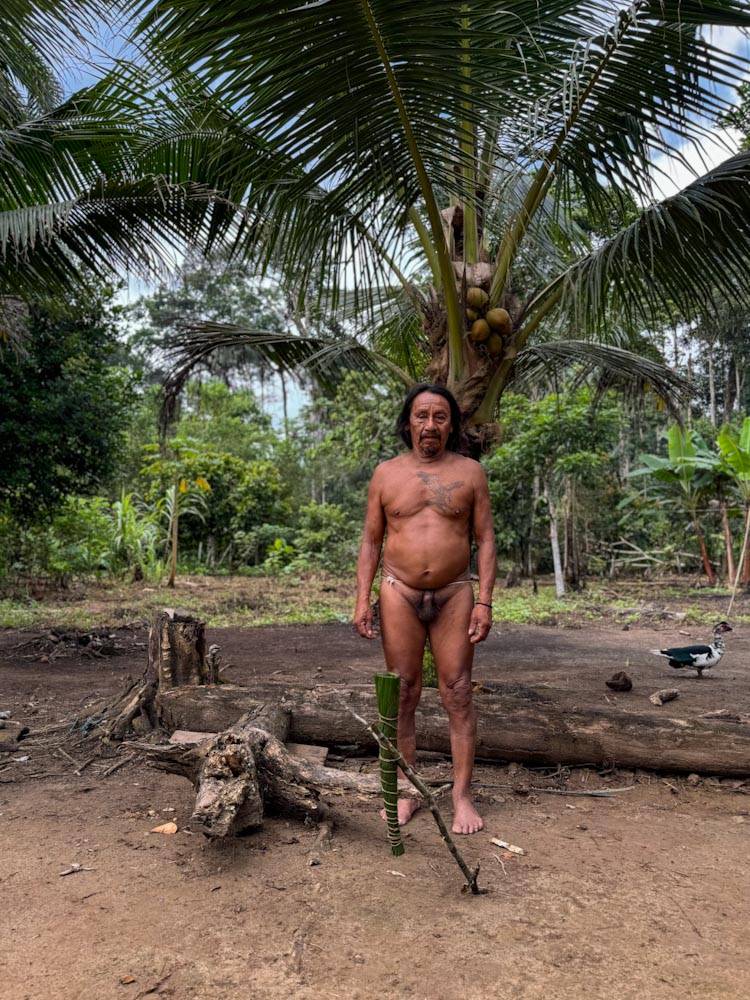
Curare is one of the most dangerous poisons on the planet. It can send a person to the afterlife in 2-3 minutes. The indigenous Waorani tribe use it in hunting monkeys.
Curare has been known to Native Americans for centuries. Tribes in the Amazon and Orinoco river basins made poison from the boiled extract of the Chondrodendron tomentosum, Strychnos toxifera, or Stefania vine. Each region had its own deadly plant.
Curare paralyzes the muscles of the victim, including the respiratory ones. Death comes from suffocation, while consciousness remains clear.
The poison only works when it enters the bloodstream, even through a scratch. But if you taste it or eat the meat of an animal killed with this poison, nothing will happen.
How the Waorani tribe in Ecuador make curare
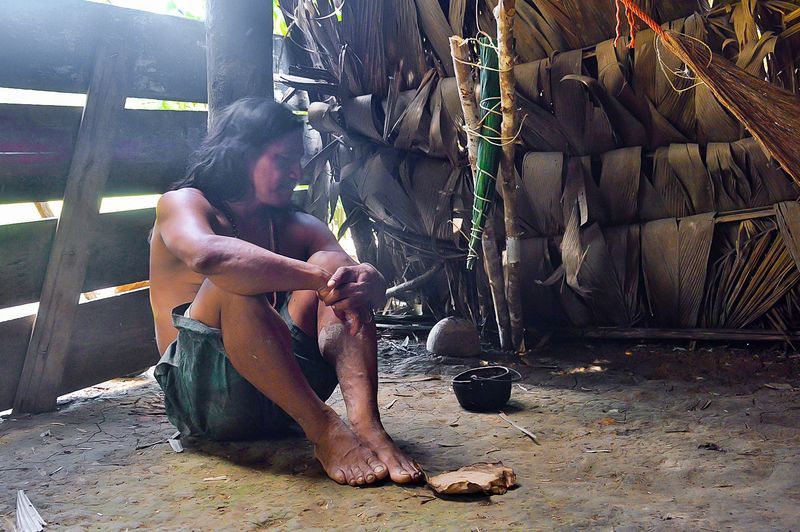
First step: collecting the vine
In the Waorani language, curare poison is called “ome.”
We ventured into the Waorani “supermarket” – the Amazon jungle – in search of the curare vine. Indians walk into the dangerous forest, full of jaguars and snakes, like we go to a store to buy bread.
Soon we found the plant we needed. Curare doesn’t look like the usual vine; it resembles a tree about 10-15 centimeters wide. A Waorani boy skillfully climbed to the top and cut about 20 meters of vine.

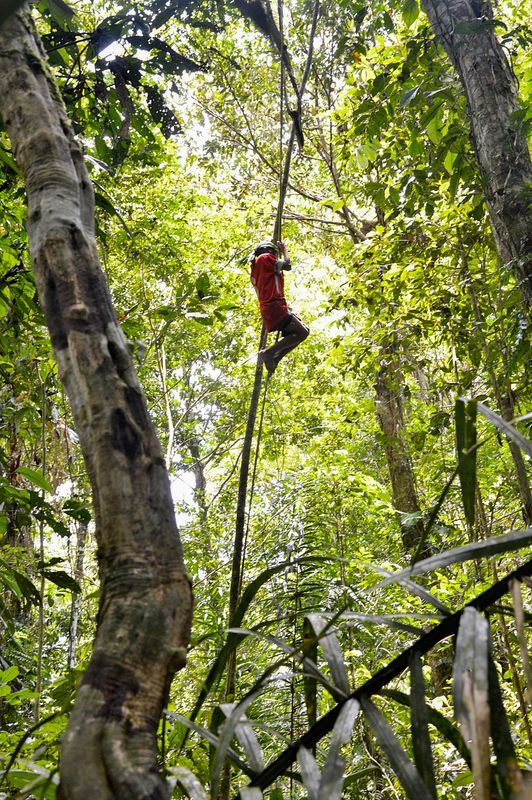
My guide Martin Baihua told a legend about this vine:
A hunter roamed the forest, but his hunt was unsuccessful. He decided to rest in the shade of a tree. When he dozed off, the spirit of the earth took him to the Land of Snakes. There, the man received a quiver with arrows – but not simple ones. A venomous snake crawled inside, which ever since brought prey to the hunter. But the snakes set one rule: no one should open the quiver except the hunter. Once his friend, despite the prohibition, dared to touch the forbidden object. In an instant, the venomous snake jumped out of the quiver and took the friend’s life. Then the snake turned into a deadly vine known as curare.
Only the bark of the vine is used for making poison. When it’s cut, the vine secretes a clear sap – it’s very bitter but harmless.
The bark is grated into fine shavings. Then it’s wrapped in funnel-shaped palm leaves and tied with thinner vines.
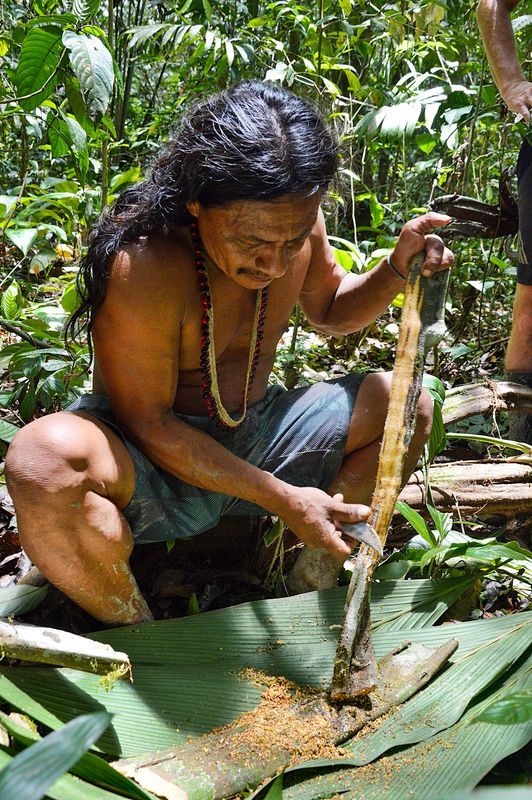

Second step: preparing the paste for the arrows
Now we can return home.
A small amount of water is poured into the wide part of the funnel. At first, water is collected in the mouth to warm it up, then spat into the funnel. Cold water is not as effective, and the poison will be weak.
Water slowly filters through the shavings, dripping with coffee-colored drops. This process takes an hour or two.You have to stand guard over the precious vessel to prevent chickens from getting poisoned.
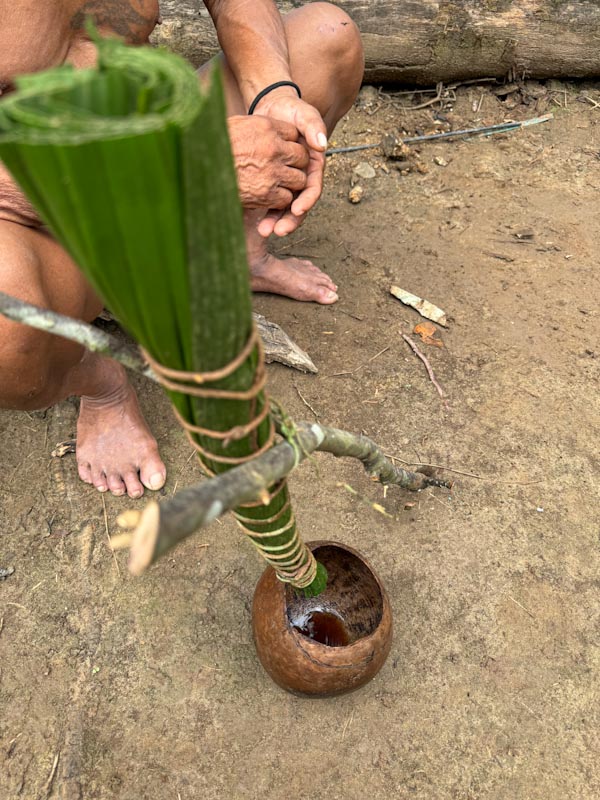
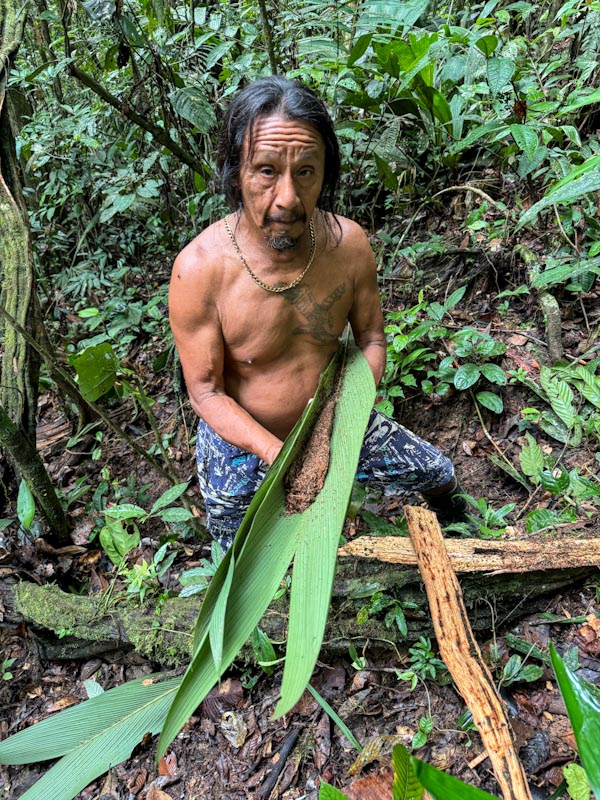
Afterward, fresh poison is mixed with old to make it stronger and put on a slow fire. Curare is boiled for 5-10 minutes until it turns into a thick, dark brown paste. It needs to be stirred very carefully until it thickens completely. The finished mixture can be stored for 2-3 months.
If the pot overturns and the poison spills – it’s a bad sign.
Then an arrow is smeared with the poisonous paste and left to dry. Now we are ready to hunt!
Who do the Waorani kill with their poisoned arrows?
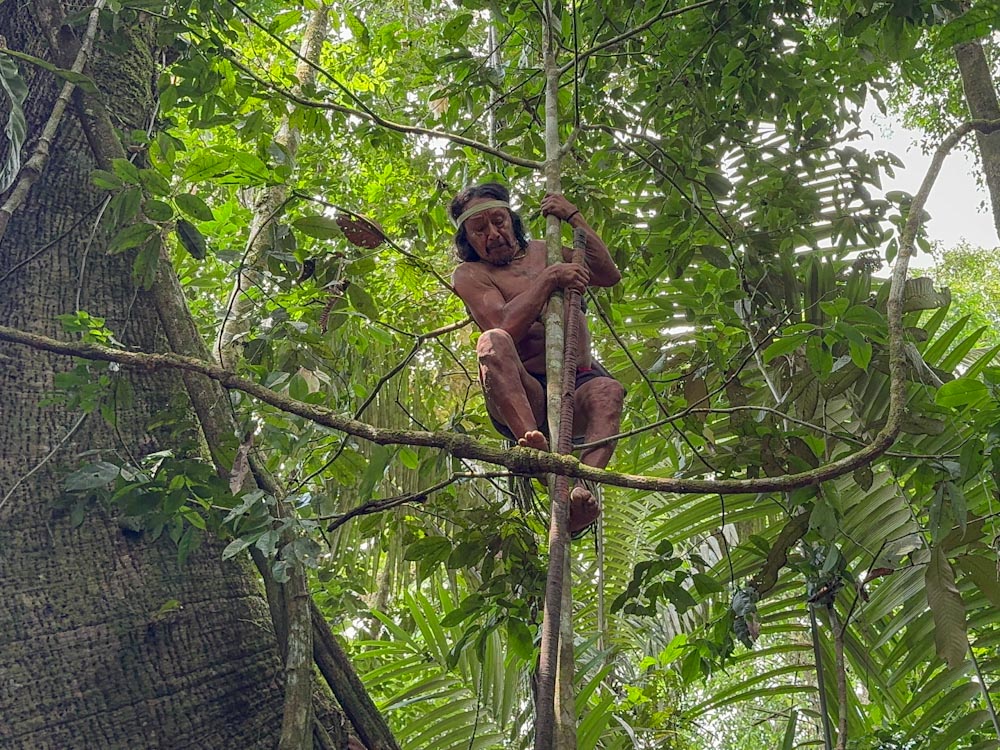
Waorani use curare to hunt monkeys using blowguns.
A poison-smeared arrow is placed in a hollow bamboo tube and blown toward the prey. A skilled hunter can hit the prey from a distance of 70 meters!
When the arrow pierces the skin, the poison dissolves in warm blood and begins to act. It paralyzes the victim, shutting down all muscles, including respiratory ones. Even with a minor wound, the animal loses mobility and dies from suffocation within minutes. The effect occurs within 10-15 minutes.
They hunt monkeys and birds this way, but larger animals cannot be taken down with a small dose of curare.
However, for humans, curare is deadly – just in slightly larger doses. A person can lose consciousness from two drops of poison entering the bloodstream. Some tribes used curare in warfare against neighbors by adding more paste to arrows.
The Discovery and Exploration of Curare
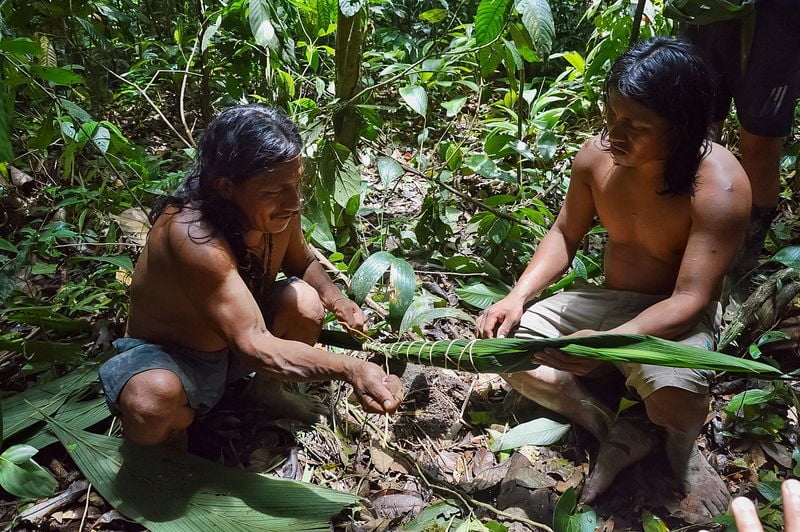
The use of curare poison in Latin America is mentioned in Christopher Columbus’s expedition, which passed through the Guinea region. His crew came under fire from natives. Poisoned arrows hit two people, and both quickly died in agony, despite relatively small wounds. The expedition members found brown paste on the arrowheads.
In 1800, Alexander von Humboldt (check out this website about his crazy journey) traveled to the Esmeralda mission on the Orinoco River. He and his companion, Aimé Bonpland, met a village shaman. They were the first Europeans shown the traditional production of poison. Humboldt accurately documented the process. He even conducted an experiment: he drank the potion and proved that such contact with curare is not fatal. The poison is dangerous only when it enters the bloodstream.
In 1942, Canadian doctors Harold Griffith and Enid Johnson first used curare for muscle relaxation. Now it is used in medicine because it relieves tension and fear. Curare (more precisely, the Pavulon preparation based on it) is used in the lethal cocktail for prisoners in the USA.
